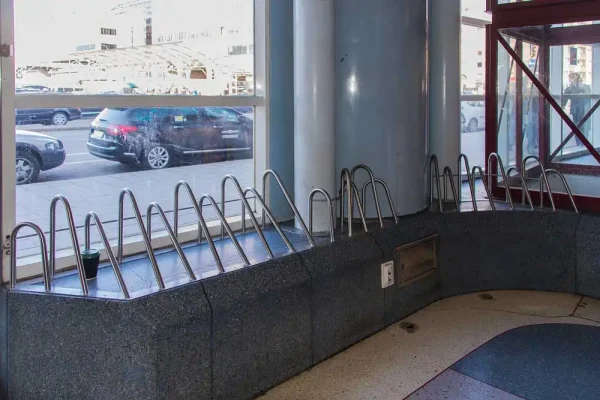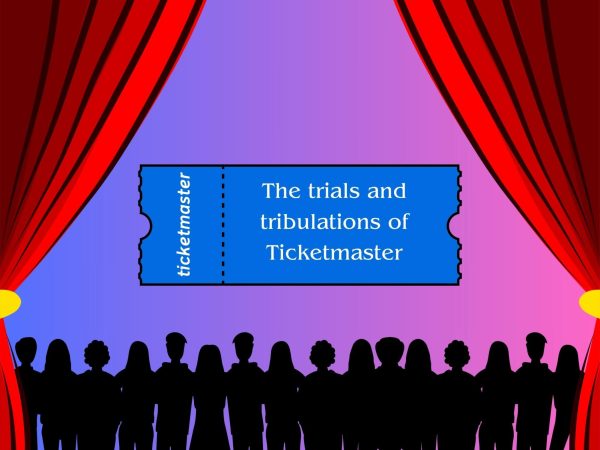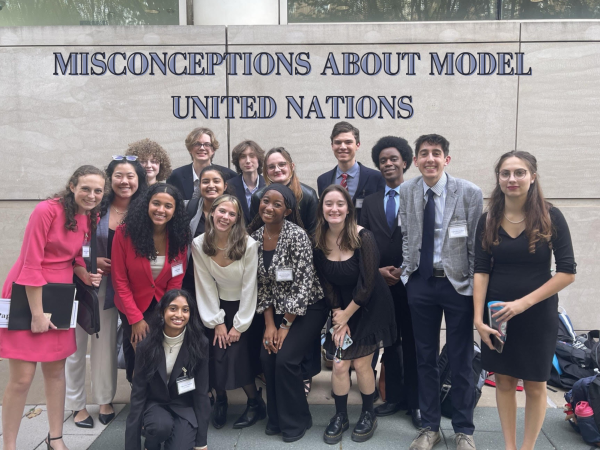Bring your own disappointment: Cobb BYOD network frustrates students
October 4, 2016
Following a push to promote the “Bring Your Own Device” (BYOD) mindset in 2010, Cobb County provides a specific wireless local area network (WLAN) for devices students bring to school. Open to any student or faculty without a password, the network strives to promote technology in education, but becomes bogged down in a complete lack of functionality, garnering anger and disappointment while simultaneously sending the signal that Cobb County does not care for the success of students or the integration of technology into the school system.
Due to the Cobb BYOD security restraints, the use of Google or any of the company’s products tends to lead to ruin. The Wi-Fi runs the gamut from working with Google on occasion to not loading any Google service at all. As a student who brings a MacBook Pro to school everyday and depends greatly on Google Drive to help The Chant function, I can no longer bear the isolation from Google at school.
Last year, after months of angry rants and disappointment, I temporarily fixed the problem by manually allowing my computer to trust the Google certificate as well as the Cobb County School District (CCSDBYOD) certificate. Google failed to work sometimes, but I found a way to function the majority of the time.
Over the summer, though, the county must have updated security and my old “hack” no longer works. As an alternative, the Cobb BYOD website offers a security certificate for download, but only as a fix for users of Office 365, Microsoft’s poor excuse for a drive.
When I arrive at school, my computer becomes dead weight. Attempting to access Google Mail or Drive becomes a worthless game and the network relegated me to using an off-brand search engine like Bing instead. Beyond the pairing with Google, the Wi-Fi remains slow and spotty at its best.
Allowing devices in classrooms provides three major benefits: technological integration, personalized lessons, and the ability to spend funding for devices on students who do not already own them.
The mixture of technology and the traditional classroom allows for interactive ways of learning, including online quizzes like Kahoot!, seminars and experiments like Carleton College’s Direct Measurement Videos, interactive presentations like Prezi, physical fitness motivators like GoNoodle, and more to come in the future. Schools have no reason to cut students off from the technology developing in society when it can function as another way to enrich learning.
Furthermore, students at different levels require different teaching practices, a tactic called differentiation. The state of Georgia claims to emphasize differentiation — it rears its head in the Teacher Keys Effectiveness System, the state’s evaluation system for teachers, and most especially in the Georgia gifted program — but overlooks technology as a key way to differentiate. From online classes to the seminars mentioned above, technology allows students to move at their own pace, whether getting extra knowledge or reinforcing old information.
Lastly, Cobb County derives its main technological funding from the Special Purpose Local Option Sales Tax (SPLOST). If students who own devices bring them to school to assist in learning, then the county can diverge the funds to buy better technology for students who require it.
Additionally, students who wish to use a device at school to enrich the experience (and of course comply with teachers’ rules) run into so many roadblocks with the wireless network that they end up relying on their own data. Functioning on my computer usually requires me to set up a personal hotspot from my phone, utilizing more of my data that I would like. Students who receive only limited data per month should not spend more to learn at school.
Still, the school does not require that students bring a device. The implementation of devices remains the teacher’s choice and many continue to ban cell phones in classes. In addition, students without devices may use school computers when required, but the computers run slowly, do not stay charged, or do not function. Students must either depend on a computer that malfunctions or a device that cannot connect to an internet, and productivity falls.
Technology should enrich the school system and answer questions the traditional classroom cannot. The BYOD network currently fails at this goal, providing terrible service and holding students back from true educational potential.
The county will announce a new wireless service called COSIGNO in October, and students and teachers alike can only hope the new network will not mirror the thinly-veiled scam.


















